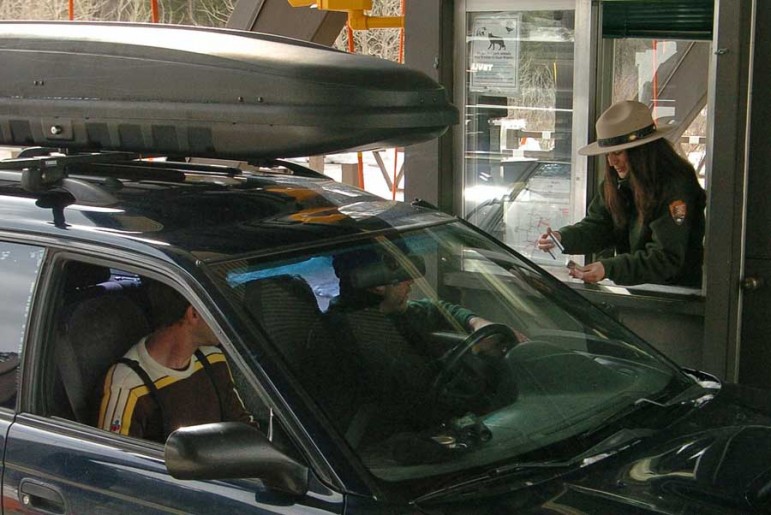
CODY, WYO. — Plenty of people will tell you that a visit to a national park like Yellowstone or Grand Teton is something you can’t put a price on. But entry fees for both parks went up June 1, and despite some initial concerns, early indications are that most visitors either haven’t noticed or don’t seem to mind.
National parks across the country are raising entry fees and other charges after National Park Service Director Jonathan Jarvis asked park superintendents last summer to assess public opinion and determine if higher rates would be supported.
Facing a tightening federal budget and rising backlog of maintenance issues and other spending priorities, the Park Service is aiming to standardize rates and tackle a wide range of key projects before the 2016 centennial of the agency’s founding.
While it may be too soon to tell what most summer visitors to Yellowstone National Park think of the increased entry fees, there have been hardly any complaints after the first 10 days under the new rate structure, said park spokeswoman Traci Weaver.
“I think people recognize this is an amazing place and Yellowstone is still a great value,” she said.
Weaver said that explaining the new rate structure to visitors has not caused significant delays or confusion.
Some visitors from West Yellowstone didn’t realize Yellowstone’s entry fee no longer covered admission to Grand Teton, while some motorcyclists at the East Gate were unhappy with the rate hike, she said.
Other than those few complaints, “most people don’t seem to recognize that there’s even been an increase,” she said.
That has also been the case at the Visitor Center at the Cody Country Chamber of Commerce.
“We have not heard anything negative,” said Claudia Wade, marketing director for the Park County Travel Council. “People either don’t know or it’s just apparently a non-issue for them.”
Ken Voorhis, director of education for the Yellowstone Association, said he was unaware of any significant complaints in Gardiner, Mont., where the Association operates a visitor center and store.
Workers in Grand Teton National Park have heard “only a handful of complaints,” said park spokeswoman Jackie Skaggs.
“It has been surprisingly well received, and most everyone is taking it in stride,” she said.
Among those who took issue were some international visitors who had apparently planned their trip well in advance, and were surprised by the higher fees, which were put in place after relatively brief periods of public comment and agency review.
Previously, a single-vehicle pass to both parks valid for one week had cost $25. Under the new rate structure now in place, each park charges $30 for a 1-week, single-vehicle pass or $50 for both parks.
Weaver and Skaggs both said the new rates have prompted increased sales of an $80 interagency annual pass good on all federal public lands, a popular option among those visiting the region for longer than one week.
That’s good news for both parks, which will each keep 80 percent of all entry fees paid or annual passes purchased. Yellowstone expects to see an additional $3 million per year, while Grand Teton could see another $1.2 million.
For Paul Filicetti and Matthew English, who were visiting Cody last week from Missoula, Mont., the fee increase hadn’t factored into their trip.
They planned to drive home over the Beartooth Highway into Yellowstone’s Northeast Entrance, and hadn’t thought much about what entry fees might be.
“I suppose I would notice it, but it wouldn’t make me avoid the park,” Filicetti said. “I just hope the money goes back to the parks and goes toward a good cause.”
Officials in both parks have said the additional revenue will help fund resource protection, infrastructure improvements, visitor facilities and other projects.
Contact Ruffin Prevost at 307-213-9818 or [email protected].
